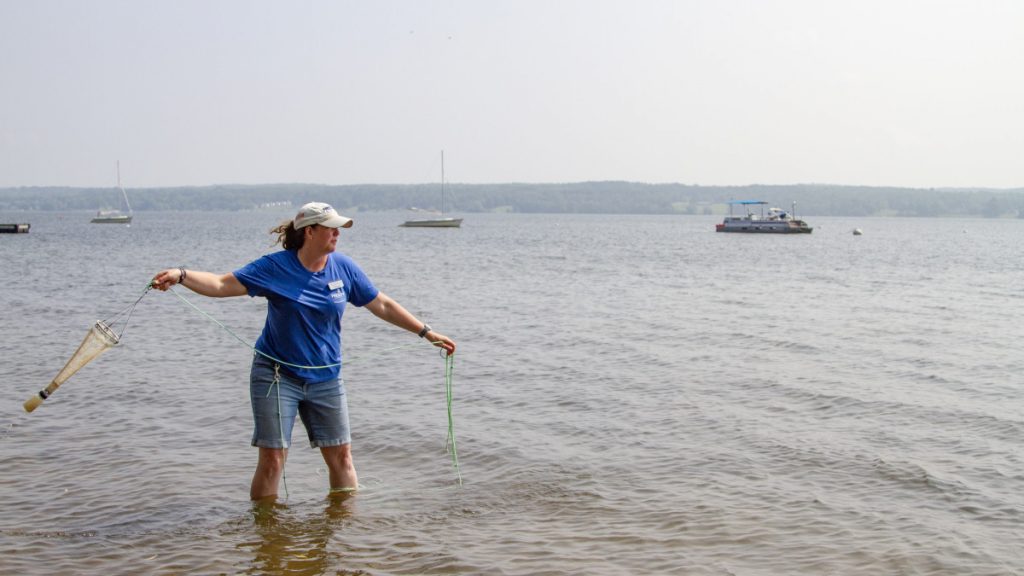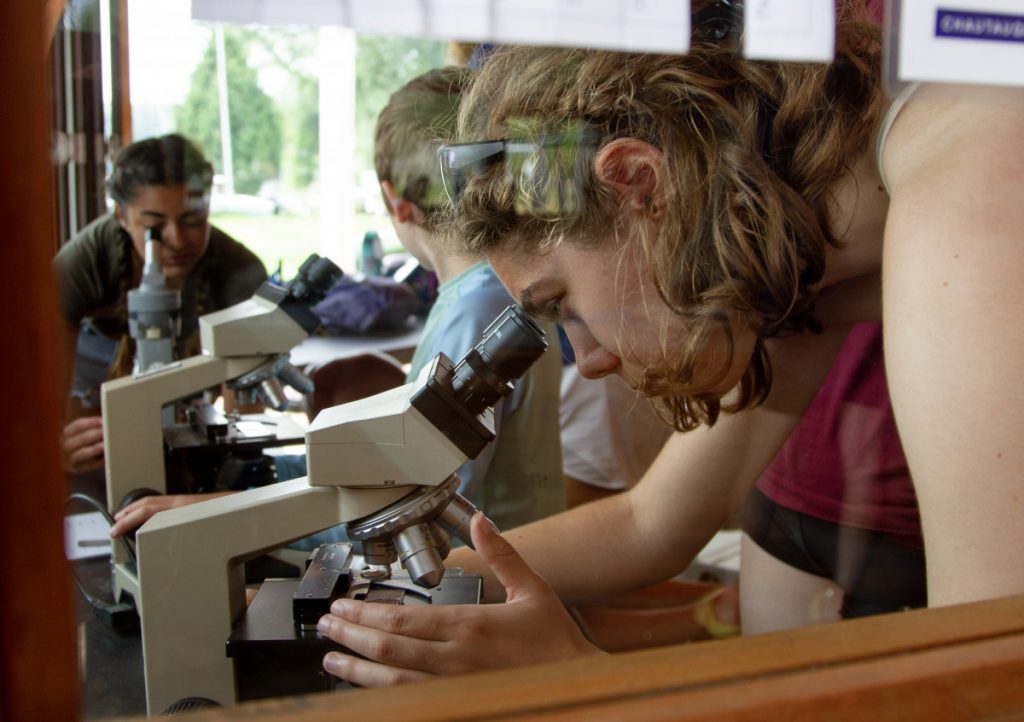
Arden Ryan
contributing writer
Coming in off the lake after a morning of sailing, students in a recent group class at the John R. Turney Sailing Center had a chance to collect algae samples from the shoreline, scooping up water samples to extract small organisms.
Led by aquatic ecologist Courtney Wigdahl-Perry, professor of Environmental Science at SUNY Fredonia, the young sailors took a part of their morning last Wednesday to learn about lake biology.
Wigdahl-Perry explained to the students the important function of algae in the lake ecosystem, before sending them off to gather their specimens.
“Chautauqua Lake is a busy place,” Wigdahl-Perry said. “It’s very dynamic.
Usually, there’s a multitude of algae species living and interacting in the lake, some helpful and some harmful, varying in type and nature.
“Different algae have different preferences,” she said. Some grow attached to plants, rocks, or sand, while other species prefer to grow in open water. Algae generate oxygen for humans and other animals, and create energy for lake fauna, Wigdahl-Perry said.
Wading along the shore, the students learned proper sampling technique and protocol for scraping plant life off the beach rocks, and how to locate translucent specimens, whose details appear best under compound light microscopes. Wigdahl-Perry demonstrated how to use a net for catching algae solids, concentrating the material for a richer analysis.
After returning to the sailing center, the students were shown how to make slides and use the microscope to analyze their discoveries for a deeper understanding of life below the lake surface, while the ecologist explained about the value of lake flora.

“Algae is the base for the lake’s complex organic structure,” Wigdahl-Perry said, but it can also be dangerous to humans and aquatic life.
Toxic algae blooms, when the plant grows rapidly in huge amounts, are harmful to the lake, causing fish kills and hampering water quality.
Microcystis, a species of freshwater cyanobacteria, is a usual suspect when such blooms occur, which can make lake swimming an unsafe activity.
“There are many reasons why we want to understand algae, why and how it grows,” Wigdahl-Perry said, mainly to manage lake algal growth and noxious blooms by controlling human activity.
“If you don’t experience (harmful algae), it may not be a big deal to you,” she said, “but if it affects your day-to-day, your summer plans, your quality of life,” people start to pay attention.
As a lake scientist, Wigdahl-Perry told the students she most enjoys the opportunity to travel, get out on the water, meet curious people and use high-tech tools for more research.
Every lake is different, she said, and every day on the lake a new chance for discovery.




